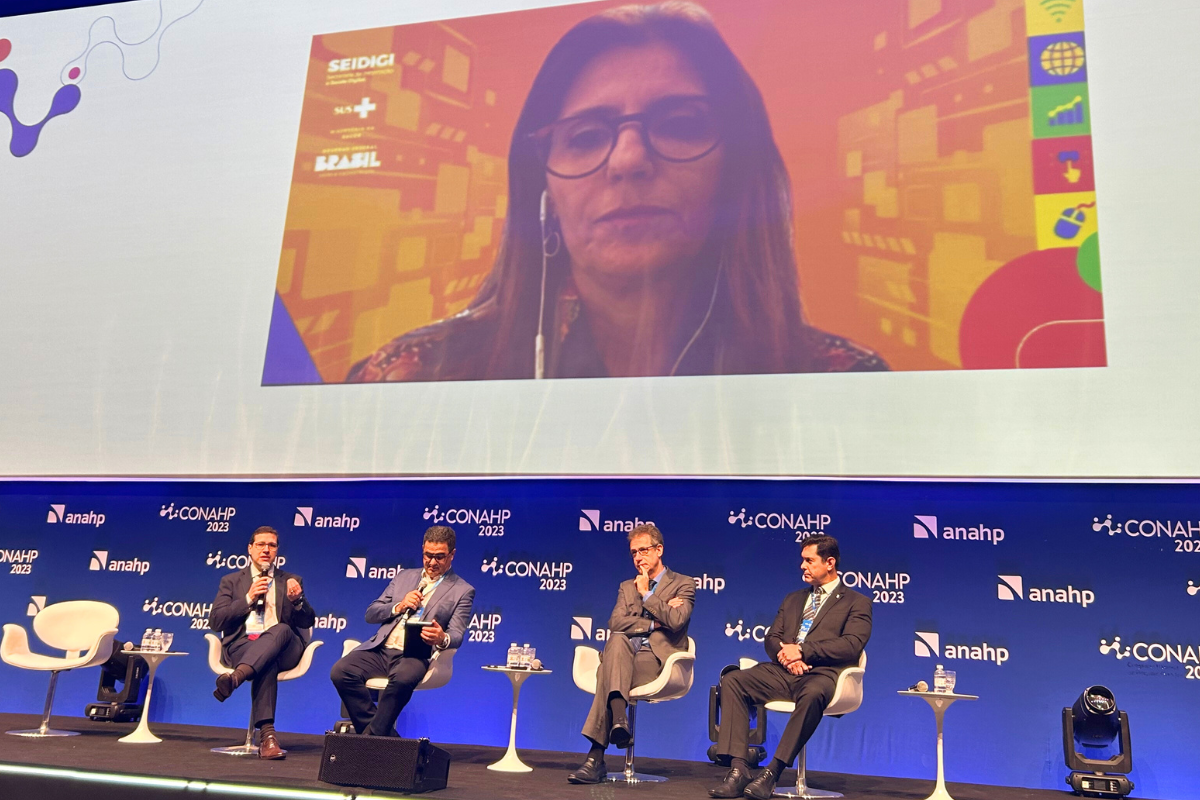In the opinion of Carlos Pedrotti, president of SDB, creating a single language is key to ensuring that information is importable and portable.
Although the pandemic and the approval of Law 14,510 of 2022 have increased the demand and potential of digital health in Brazil, a fundamental step still needs to be taken so that it can reach its full potential and, in fact, fulfill its proposed objectives. Among these purposes are expanding access to quality care, managing public health and promoting scientific research based on the thousands of data generated by the entire system; this step is interoperability.
This word, increasingly widespread in the health sector, is the starting point for the integration of health data. The big question currently being addressed is how to operationalize this process of interoperating health data. The challenges involve several factors, and, due to its great relevance and need for maturity, the interoperability of data and systems has been widely discussed by government entities, players from the sector, technology developers and civil society.
At the latest edition of the National Congress of Private Hospitals (Conahp), a panel brought together Ana Estela Haddad, Secretary of Digital Health at the Ministry of Health; Carlos Pedrotti, President of Saúde Digital Brasil (SDB); Arthur Chioro, President of the Brazilian Company of Hospital Services (Ebserh); and Arthur Sabbat, Deputy CEO of the National Data Protection Authority (ANPD). Moderated by Marco Aurélio Ferreira, Director of Government Relations at the National Association of Private Hospitals (Anahp), participants discussed the positive impacts of interoperability for the health sector, its obstacles, and its relevance for the future of health in Brazil.
The president of SDB highlighted that currently, in the ecosystem of Saúde Digital Brasil alone, an association responsible for bringing together representatives from all links in healthcare that operate in digital media, there are more than 35 million people served by telehealth. This highlights the logistical capacity of remote healthcare services, which have been on an upward trend since 2020. The focus now is on promoting the integration of healthcare at all levels, from primary care, through specialized care and support, to decision-making in tertiary care and rehabilitation.
“Health systems in Brazil and around the world today are fragmented. There will be no integration and efficiency in health if we do not connect all levels of care and make the patient journey unique, both in supplementary health and in the SUS”, he reinforces.
Pedrotti explained that there are three important work fronts to truly optimize the exchange of information between these systems. The creation of a single language and a terminology that is universally validated is at the top of the list to ensure that the systems interoperate. The second point refers to defining the aspects of information security, privacy and reliability of the information. “In healthcare, all data is sensitive, and complete privacy is necessary so that the patient has the right to decide who and when someone will have access to that data,” he added.
There is also a real concern with everything that involves electronic documentation, whether it comes from remote care or in-person consultations. The standardized preparation of electronic documents and the establishment of parameters so that this dialogues with the entire healthcare chain are mandatory in this scenario. For Pedrotti, ensuring, for example, the electronic dispensing of medications, ensuring that those who need them can access them safely, as well as eliminating waste and ensuring the traceability of medications are essential issues that can be improved with the digitalization of processes. He also highlighted that the SDB has working groups entirely dedicated to each of the major challenges and/or relevant issues in the sector, with the presence of sector experts in each of them, such as Interoperability, Electronic Health Documents and Dispensing; Information Security and Data Protection; and Clinical Protocols.
“We need to have qualified data and integration between the primary system, secondary care and tertiary care, which are the hospitals that need to have access to a range of information and thus know the health history of each patient. We are no longer in a time of isolated care, but rather of a single journey, which needs to be integrated. Only in this way will we be able to have an efficient and effective service, and guarantee the sustainability of healthcare in the country”, concludes the president of SDB.
In her speech, the Secretary of Digital Health of the Ministry of Health, Ana Estela Haddad, reinforced this need to interoperate health data and stressed that there are still major challenges to be overcome in the country for complete integration of systems. In the case of the SUS, for example, she emphasized that it is a system that has existed for 35 years, which has grown in a fragmented way and has indispensable data and systems, making the scenario even more complex. According to the Secretary, the solution that is being adopted involves the construction of a data interoperability architecture guided by National Health Data Network (RNDS), national health interoperability platform established by Ordinance GM/MS No. 1,434, of May 28, 2020.
“The idea is to enable citizens to have access to their data and managers to have consolidated figures for decision-making; and professionals to have the support they need to continue providing care, even when they are in a different healthcare unit. Furthermore, the idea is to enable researchers to use this data, while respecting the LGPD, to find solutions that benefit public health,” emphasized Ana Estela, who also revealed that the government is working on a national digital maturity index to guide this process in a unique and coordinated way for all healthcare in Brazil.
The other members of the table and the panel moderator brought relevant data and discussion points, as well as demonstrating how much the public and private sectors are engaged in building dialogues and projects that enable complete interoperability of systems and data in the country.
Pedrotti concluded his participation in the debate by speaking about SDB’s willingness to collaborate in defining these standards and terminologies for the effective advancement of interoperability in the health sector. “Our main interest is to forward and consolidate this data so that it becomes available to everyone. Therefore, we are available to work with regulatory agencies and authorities, such as the digital health secretary, to advance in this aspect,” he concluded.





